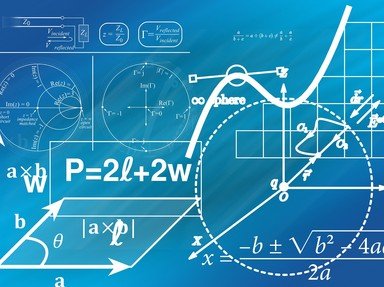Quiz Answer Key and Fun Facts
1. Let's start with a concept you may have seen in a high school algebra class. A square number is simply a number of the form x^2, such as 25=5^2. Is there another way to check that 25 is a square?
2. One possible generalization of square numbers is triangular numbers, which are numbers that can be arranged into a triangle. Which of the following numbers is a triangular number?
3. Recall that a prime number is an integer with exactly two divisors, such as 5. Why are they important?
4. A Fermat prime is a prime number that is one more than a power of 2. For example 17=16+1 is a Fermat Prime. What is true about Fermat primes?
5. What sort of number is 28?
6. The notation 6! describes the number 1*2*3*4*5*6. More generally n! is the product of the first n integers. How is 6! most often pronounced?
7. If somebody asked you to find a square root of -4, what sort of number would you use?
8. Now for something different. Which of these numbers is a palindromic number?
9. A Fibonacci number is any number in the sequence 1, 1, 2, 3, 5, 8, 13, 21, 34, and so on. To find the next number of the sequence, you add the last two numbers. What well known number do the ratios 1/1, 2/1, 3/2, 5/3, 8/5, 13/8, ... approach?
10. Pi and e are both transcendental numbers. What is a transcendental number?
Source: Author
thok
This quiz was reviewed by FunTrivia editor
crisw before going online.
Any errors found in FunTrivia content are routinely corrected through our feedback system.


